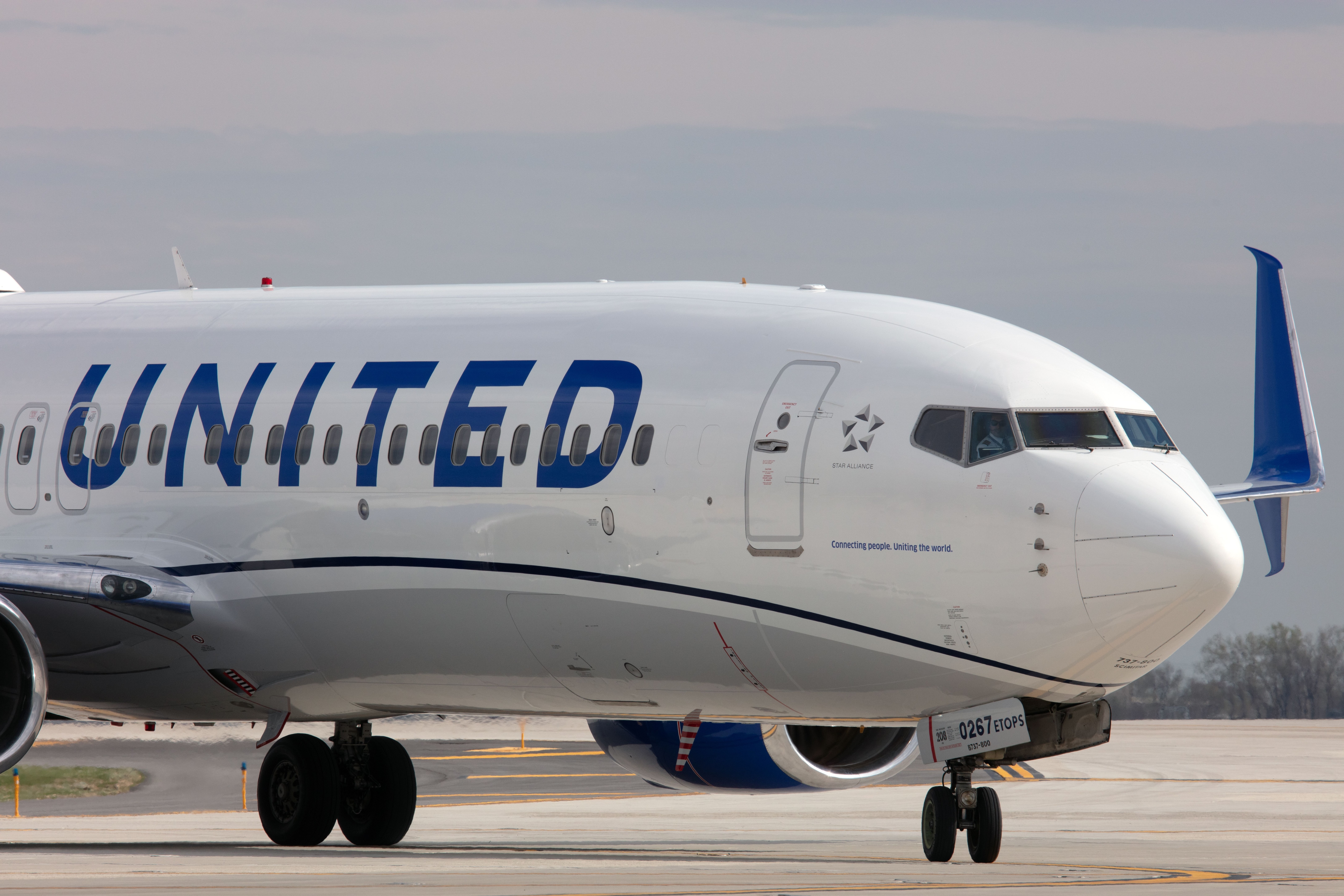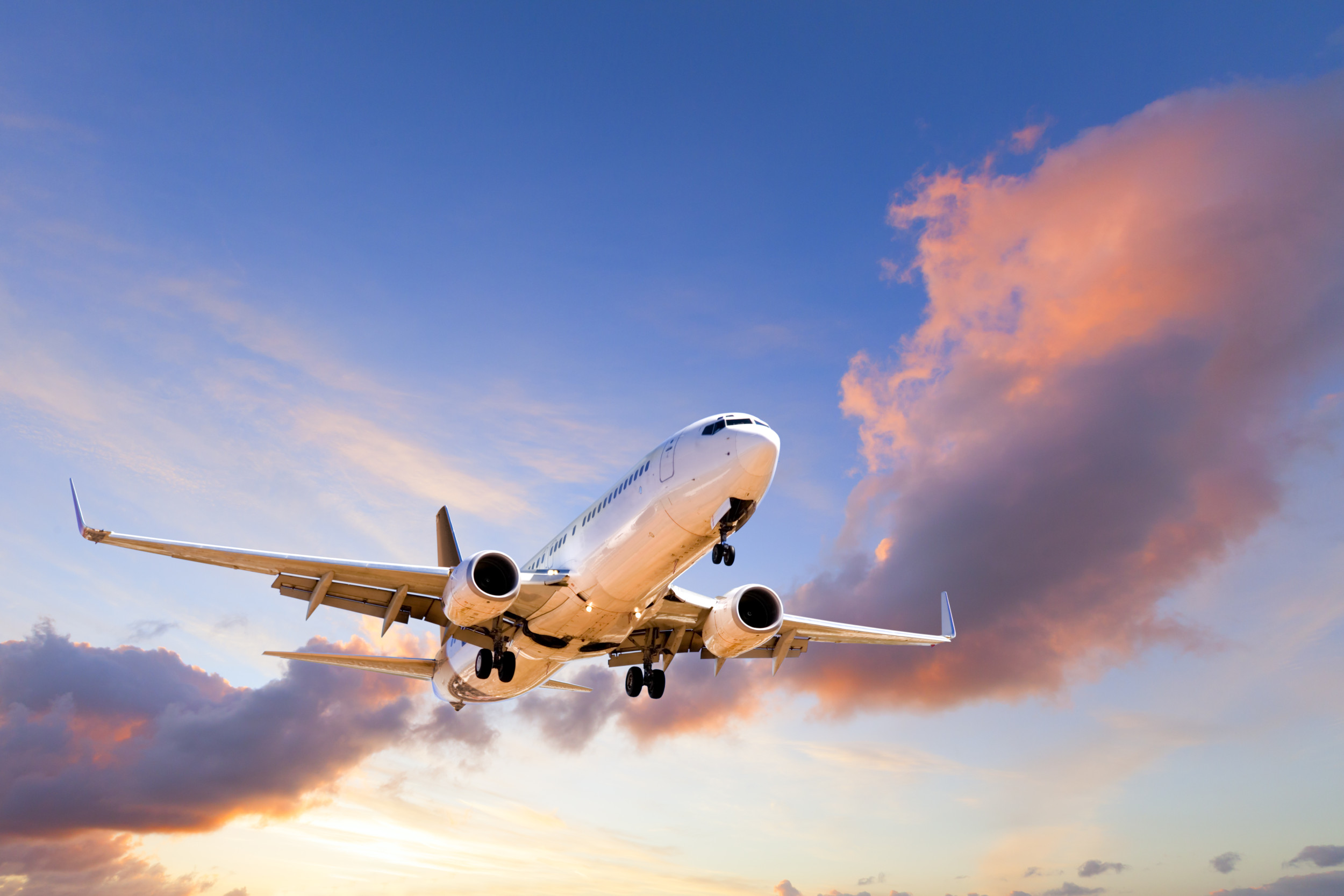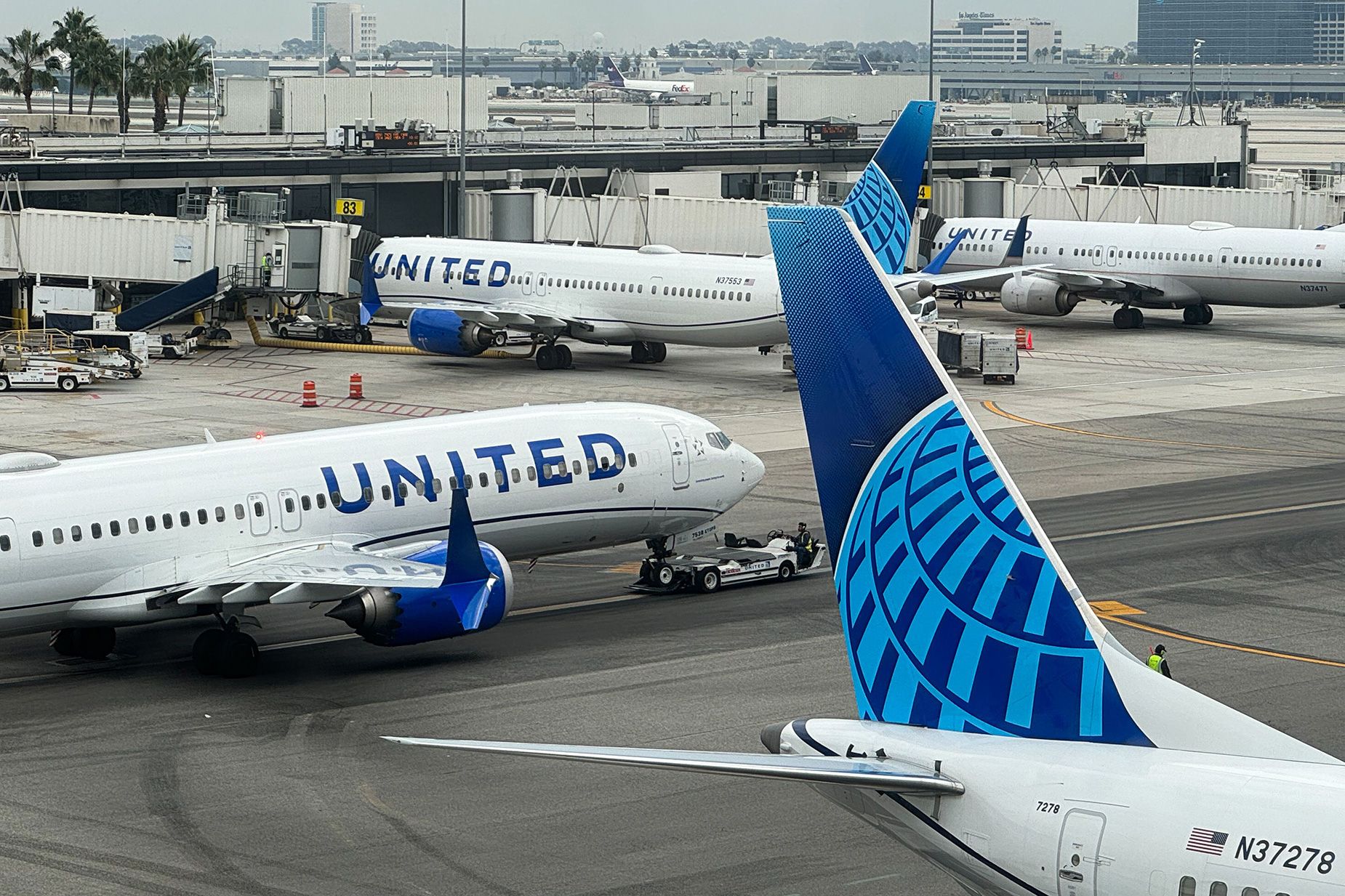Imagine this—you’re chilling on a flight, minding your own business, scrolling through TikTok or whatever, and suddenly chaos breaks loose because of something straight outta a sci-fi movie. Yeah, we’re talking about United Airlines Flight 2477, the infamous biohazard incident that sent shockwaves across the aviation world. So, buckle up, folks, because we’re diving deep into this wild tale.
This story isn’t just some random gossip; it’s a real-life drama filled with twists and turns. United Airlines Flight 2477 hit the headlines when a biohazard scare turned what should’ve been an ordinary journey into a full-blown crisis. But what exactly happened? How did it affect passengers, crew, and even the airline itself? We’re about to spill all the tea.
Before we get into the nitty-gritty, let’s set the stage. Air travel is already stressful enough—long lines, cranky passengers, and those tiny bags of pretzels that never seem to fill you up. But throw in a potential biohazard situation, and suddenly you’ve got a recipe for disaster. That’s exactly what unfolded on this flight, and we’re here to break it down for you in a way that’s easy to digest and packed with juicy details.
- Brian Kilmeade Salary 2024 The Real Deal Behind The Numbers
- Unlock Your Property Secrets A Comprehensive Guide To Larimer County Assessor Property Search
What Exactly Happened on United Airlines Flight 2477?
Alright, so here’s the lowdown. On a seemingly normal day, United Airlines Flight 2477 was cruising along, carrying passengers from Point A to Point B. But then, BOOM—a passenger started showing symptoms that raised alarm bells. Fever, coughing, and other signs pointed toward a possible biohazard exposure. Panic ensued as the crew scrambled to contain the situation.
The flight had to make an emergency landing, and once it touched down, hazmat teams swooped in like superheroes in shiny suits. Passengers were evacuated, tested, and questioned, while the aircraft underwent a thorough decontamination process. It was a scene straight out of a movie, except this time, it was all too real.
Key Events That Unfolded During the Incident
Let’s break it down step by step:
- John Walsh Speaking Fee Unlocking The Value Of A True Legend
- Jericho Rosales Age A Closer Look At The Heartthrobs Life And Legacy
- Passenger X starts feeling unwell mid-flight.
- Crew notifies the pilot, who declares an emergency.
- Flight diverts to the nearest airport equipped to handle such situations.
- Hazmat teams arrive, and passengers are quarantined for testing.
- Aircraft is sanitized, and investigations begin to determine the cause.
It’s worth noting that while the initial panic was palpable, officials later confirmed that the situation wasn’t as dire as it seemed. Nevertheless, the incident left a lasting impression on everyone involved.
Understanding the Term "Biohazard" in Aviation
So, what does “biohazard” even mean in the context of air travel? Simply put, it refers to any biological material—like viruses, bacteria, or toxins—that could pose a risk to human health. In the case of United Airlines Flight 2477, the fear was that a contagious disease might have been onboard.
Airlines are no strangers to handling medical emergencies, but biohazard incidents are a whole different ball game. They require specialized protocols, rapid response teams, and sometimes even grounding flights until the coast is clear. This particular event highlighted the importance of preparedness in the aviation industry.
Why Biohazards Are a Big Deal in Air Travel
Here’s why biohazards are such a concern:
- Close quarters in planes increase the risk of transmission.
- Passengers often travel across borders, making containment tricky.
- Delays caused by biohazards can disrupt entire schedules.
For airlines like United, ensuring passenger safety is paramount. That’s why they invest heavily in training and equipment to tackle these kinds of situations head-on.
The Role of United Airlines in Managing the Crisis
When things go sideways, how a company responds can make or break its reputation. In the case of United Airlines Flight 2477, the airline sprang into action almost immediately. They coordinated with local authorities, provided updates to passengers, and ensured that everyone received the care they needed.
But managing a crisis like this isn’t easy. There’s the logistical nightmare of rerouting flights, accommodating affected passengers, and addressing public concerns. United faced its fair share of criticism, but overall, their response was commendable.
Lessons Learned from the Incident
From this experience, United Airlines—and the aviation industry as a whole—picked up valuable lessons:
- Communication is key during crises.
- Investing in advanced detection systems can save time and resources.
- Regular drills and training are essential for staff preparedness.
These takeaways have helped shape better policies and practices moving forward.
Passenger Experiences: What It Was Like Onboard
Now, let’s hear from the people who were actually there. Passengers aboard United Airlines Flight 2477 shared their harrowing accounts of the ordeal. Some described feeling scared and uncertain, while others praised the crew for staying calm under pressure.
One passenger, Jane Doe, said, “I thought I was just going to grab a quick nap, but instead, I found myself surrounded by guys in hazmat suits. It was surreal, to say the least.” Another passenger, John Smith, added, “The crew did an amazing job keeping us informed and comfortable despite the chaos.”
How Passengers Coped During the Emergency
Coping strategies varied among passengers:
- Some tried to stay positive by cracking jokes.
- Others focused on staying informed and following instructions.
- A few sought comfort in connecting with fellow passengers.
Ultimately, the shared experience brought many of them closer together.
The Impact on United Airlines
Incidents like this don’t just affect passengers—they also leave a mark on the airline itself. United Airlines faced scrutiny from regulators, media, and the general public. While they managed to handle the situation relatively well, it still took a toll on their operations and reputation.
However, the airline used this as an opportunity to improve. They reviewed their protocols, upgraded their training programs, and enhanced their communication strategies. These efforts demonstrated their commitment to passenger safety and satisfaction.
How United Restored Trust After the Incident
Restoring trust isn’t easy, but United took several steps:
- Issued public apologies and clarified misconceptions.
- Implemented new safety measures to prevent future incidents.
- Engaged with customers through social media and customer service channels.
These actions helped reassure passengers that United was serious about learning from its mistakes.
Global Implications of the Biohazard Incident
While United Airlines Flight 2477 was a localized event, its implications extended far beyond one flight. It sparked discussions about global health security and the role of airlines in preventing the spread of diseases.
International organizations like the World Health Organization (WHO) and the International Air Transport Association (IATA) revisited guidelines to ensure better preparedness. Governments also stepped up by investing in infrastructure and technology to detect and respond to biohazards more effectively.
Steps Taken by Global Bodies
Here’s how global bodies reacted:
- WHO updated its travel guidelines to include biohazard scenarios.
- IATA collaborated with airlines to develop standardized response plans.
- Governments increased funding for health monitoring systems at airports.
These collaborative efforts aim to create a safer and more resilient aviation ecosystem.
Preventing Future Biohazard Incidents
Prevention is always better than cure, right? To minimize the chances of similar incidents occurring in the future, both airlines and passengers need to play their parts. For airlines, this means investing in cutting-edge technology and maintaining stringent safety standards. For passengers, it’s about being responsible travelers and reporting any unusual symptoms promptly.
Experts agree that education and awareness are crucial components of prevention. By informing the public about biohazards and how to handle them, we can collectively reduce risks.
Tips for Passengers to Stay Safe
Here are some tips for passengers:
- Monitor your health before traveling and seek medical advice if necessary.
- Follow hygiene practices, such as frequent handwashing and using sanitizers.
- Report any suspicious symptoms to the crew immediately.
Small actions can make a big difference!
Conclusion: What We’ve Learned from United Airlines Flight 2477
As we wrap up this wild ride, it’s clear that United Airlines Flight 2477 taught us a lot about biohazards in aviation. From the importance of preparedness to the power of collaboration, this incident highlighted areas where improvements could be made.
So, the next time you’re on a flight, remember that behind the scenes, there’s an entire team working tirelessly to ensure your safety. And if you ever find yourself in a similar situation, stay calm, follow instructions, and trust that help is on the way.
Got thoughts or questions about this story? Drop a comment below and let’s chat. Or better yet, share this article with friends and family so they can learn from this fascinating case. Remember, knowledge is power, and staying informed keeps us all safer!
Table of Contents
- What Exactly Happened on United Airlines Flight 2477?
- Key Events That Unfolded During the Incident
- Understanding the Term "Biohazard" in Aviation
- Why Biohazards Are a Big Deal in Air Travel
- The Role of United Airlines in Managing the Crisis
- Lessons Learned from the Incident
- Passenger Experiences: What It Was Like Onboard
- How Passengers Coped During the Emergency
- The Impact on United Airlines
- How United Restored Trust After the Incident
- Global Implications of the Biohazard Incident
- Steps Taken by Global Bodies
- Preventing Future Biohazard Incidents
- Tips for Passengers to Stay Safe
- Conclusion: What We’ve Learned from United Airlines Flight 2477



Detail Author:
- Name : Ms. Leanne Toy
- Username : rau.anne
- Email : skoss@wilkinson.org
- Birthdate : 1996-11-30
- Address : 35307 Ashleigh Fall Ortizstad, IA 88048
- Phone : (279) 777-2558
- Company : Beahan, Osinski and Von
- Job : Soil Conservationist
- Bio : Voluptatem asperiores autem fugiat cum saepe. Dolores est ut accusamus doloribus voluptatem. Et aperiam ducimus repudiandae rerum doloremque ut voluptatem.
Socials
instagram:
- url : https://instagram.com/noel.harris
- username : noel.harris
- bio : Nulla cum adipisci dolorem sit. Est vitae natus aliquam sint possimus consequatur.
- followers : 2339
- following : 326
facebook:
- url : https://facebook.com/harrisn
- username : harrisn
- bio : Itaque quod dolor dolore alias. Et aut quas eveniet quaerat odio esse.
- followers : 4621
- following : 2212